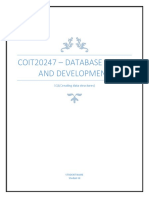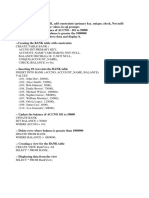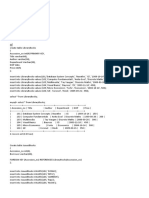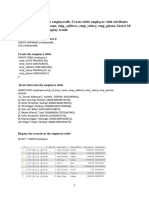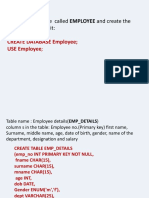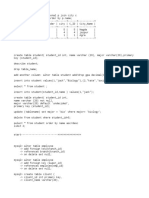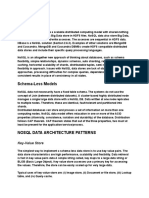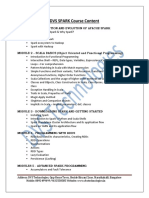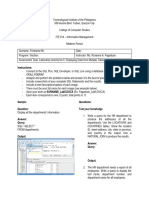0% found this document useful (0 votes)
34 views7 pagesDBMS Exercise 2
The document outlines the creation of various database tables with foreign key constraints to ensure referential integrity. It includes SQL commands for creating tables such as DEPT1, STUDENT1, CUSTOMER, LOAN1, and others, along with sample data insertion and retrieval queries. The final result confirms that the tables were successfully created and the integrity constraints were applied correctly.
Uploaded by
mablediana30Copyright
© © All Rights Reserved
We take content rights seriously. If you suspect this is your content, claim it here.
Available Formats
Download as DOCX, PDF, TXT or read online on Scribd
0% found this document useful (0 votes)
34 views7 pagesDBMS Exercise 2
The document outlines the creation of various database tables with foreign key constraints to ensure referential integrity. It includes SQL commands for creating tables such as DEPT1, STUDENT1, CUSTOMER, LOAN1, and others, along with sample data insertion and retrieval queries. The final result confirms that the tables were successfully created and the integrity constraints were applied correctly.
Uploaded by
mablediana30Copyright
© © All Rights Reserved
We take content rights seriously. If you suspect this is your content, claim it here.
Available Formats
Download as DOCX, PDF, TXT or read online on Scribd
/ 7




























